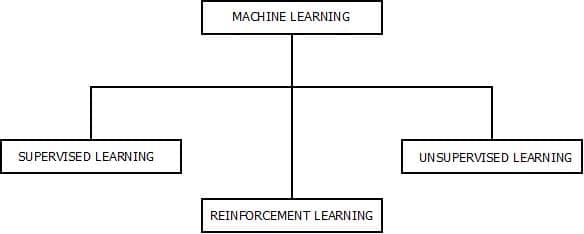Machine Learning : Introduction
- According to Arthur Samuel, Machine Learning can be defined as the “ computers that has ability to learn without being explicitly programmed”.
- It means that, machine learning is a branch of computer science which enables computer systems to learn and respond to queries on the basis of experience and knowledge rather than from predefined programs.
- Machine Learning can be used to study data, construct algorithms for it and can further make predictions on the data.
- Machine learning can be classified into three categories, depending upon the nature of learning. These are:

Machine Learning
Supervised Learning
- When learning of a function can be done from its inputs and outputs, it is called as supervised learning.
- One of the example of supervised learning is “Classification”.
- It classifies the data on the basis of training set available and uses that data for classifying new data.
- The class labels on the training data is known in advance which further helps in data classification.
Issues in Supervised Learning
- Data Cleaning: In data cleaning, noise and missing values are handled.
- Feature Selection: Abundant an irrelevant attributes are removed while feature selection is done.
- Data Transformation: Data normalization and data generalization is included in data transformation.
Classification Methods
- Decision Trees.
- Bayesian Classification.
- Rule Based Classification.
- Classification by back propagation.
- Associative Classification.
Unsupervised Learning
- When learning can be used to draw inference from some data set containing input data, it is called as unsupervised learning.
- It clusters the data on the basis of similarities according to the characteristics found in the data and grouping similar objects into clusters.
- The class labels on the training data is not known in advance i.e. no predefined class.
- The problem of unsupervised learning involves learning patterns from the inputs when specific output values are supplied.
- Clustering is an example of unsupervised learning which can further be used on the basis of different methods as per requirements.
Clustering Methods
- Partitioning.
- Hierarchical.
- Density Based.
- Grid Based.
- Model Based.
Reinforcement Learning
- Reinforcement in general is, the action or process of establishing a pattern of behavior.
- Hence, Reinforcement learning is the ability of software agents to learn and get reinforced by acting in environment i.e. learning from rewards.
- In reinforcement learning, the software agents acts upon the environment and gets rewarded for its action after evaluation but is not told, of which action was correct and helped it to achieve the goal.
- For Example: Game Playing, Statistics.
Applications : Reinforcement Learning
- Manufacturing.
- Financial Sector.
- Delivery Management.
- Inventory Management.
- Robotics.